 Dan Crotty is an 18 handicapper who took up the game at the age of about 45. Now approaching 60, Dan – a lefty – fights either pulling the ball to the right or hitting large slices that don’t go very far with the driver.
Dan Crotty is an 18 handicapper who took up the game at the age of about 45. Now approaching 60, Dan – a lefty – fights either pulling the ball to the right or hitting large slices that don’t go very far with the driver.
Having spent a lifetime doing a fair amount of manual labor, Dan’s flexibility isn’t always quite what it could be – stiff knees, hips, and a back impair the timing of his swing.
Dan says he works on his ball position as well as not collapsing his lead (right) arm at impact.
Backswing and Power Leaks
As Dan makes the backswing we see a large lateral shift of his upper body. This large shift compromises his balance and posture, and makes it difficult to return to a consistent impact position. Shifting away to such a strong degree means he will have to shift back in the opposite direction. How much weight he shifts back and how quickly he shifts it may vary from swing to swing, and may be a cause of inconsistency from one swing to the next.
Looking at the backswing of Steve Elkington we see much less lateral motion (his head is positioned over the inside his rear leg) which shows that Elkington is making a much more rotational motion during his backswing.
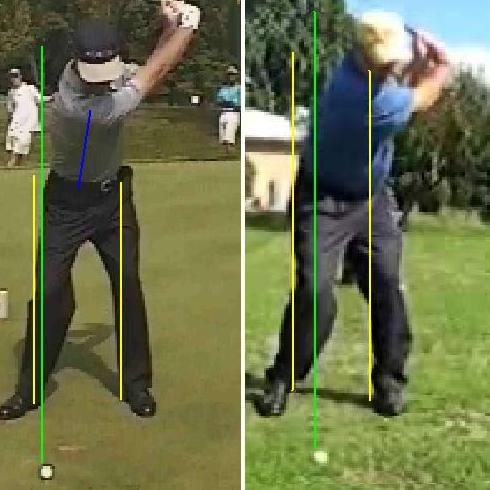
Downswing and Power Leaks
The first power leak that we see as he makes the downswing is that his upper body is the first thing that we see unwinding. The upper body unwinding so early means the upper body as a power generator will be expended as impact approaches, and the arms will be left on their own to provide a small amount of power at impact. The upper body and chest being the first thing to unwind also leads to the arms and shaft being pulled (out toward the toes and ball) on to a steep downswing path.
As Elkington starts his downswing we see his upper body staying turned away from the target. Elkington’s back stays facing the target as the downswing begins which allows his arms to drop behind him and descend on a shallow angle. By keeping the upper body wound up during the downswing Elkington is able to use his upper body in sync and along with his arms to unleash his power close to arrival at impact.
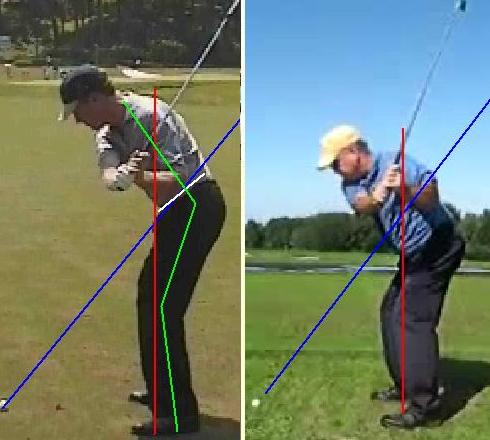
The second power leak will come from a loss of wrist hinge. The upper body unwinding early leads to a loss of the rear wrist’s ability to retain hinge. The steep angle of approach on the downswing means physics, biomechanics, and gravity are going to work to unhinge the rear wrist (left wrist since you play golf left handed).
Since Elkington keeps the upper body wound up as the downswing starts the arms drop behind the rear shoulder, and on to a shallow downswing path. The club flattening its plane, physic, biomechanics, and gravity are all working in his favor to keep the rear wrist hinged (and in some cases lead to increased hinging).
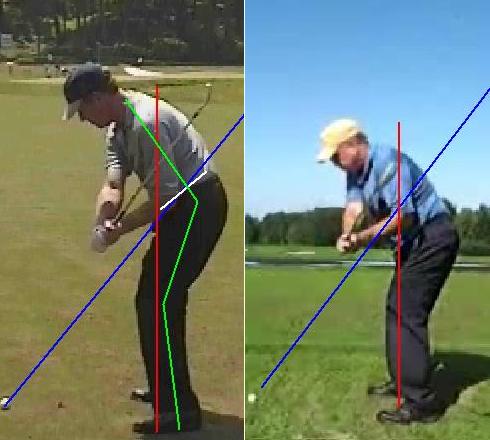
The third power leak could also be termed a misdirection of power. The steep shaft plane angle coming down means power is going to be applied in a descending direction (in to the ground). The descending angle at impact leads to the ball spinning up the clubface, and additional backspin on the golf ball. While adding backspin tends to reduce sidespin, which can produce straight shots it also reduces forward momentum on the ball and leads to ballooning ball flight that is more susceptible to wind.
The shallow approach and shaft plane of tour pros leads to power being directed out toward the target. The shallow impact we see with tour pros means less force is directed into the ground, and more is energy is available to launch the ball forward. Increased ball speed, and a powerful ball flight are the results.
Hip High Down
When the hands drop to hip high in Dan’s downswing we all of the rear arm in the face on view, but in Elkington’s swing when his hands reach hip high his rear arm and hand are hidden from our view. Dan’s arm being visible suggests that his chest is no longer turned away from the target (its facing the ball), and that his arms and club are descending on a steep angle. Elkington’s arm being hidden from our view lets us know that his chest and shoulders are still turned away from the target, his arms have been given the time and room to drop behind him (instead of being pulled in front of him), and that the club is on a shallow approach to the ball.
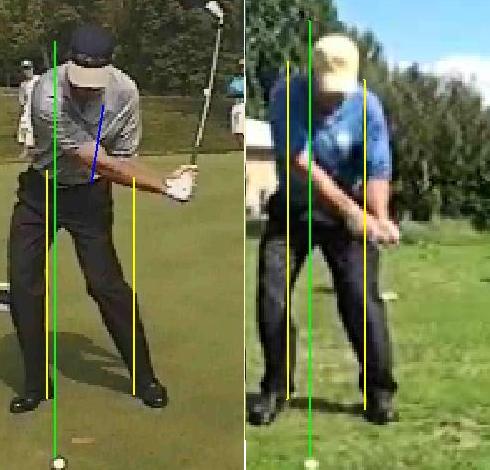
Impact
Just past impact we see daylight just between Dan’s target side arm and his chest. This shows us that his arms are moving faster than his upper body (chest) at impact, and thus the arms are providing power while his upper body has slowed (or stopped) showing that they are contributing very little power at this point.
In the picture of Elkington at impact we see the upper arms have remained close to the upper chest. Elkington has been able to move his arms and body in sync, so that both are able to provide power at impact. The body and arms working together contributes more power to the shot than either could produce alone.
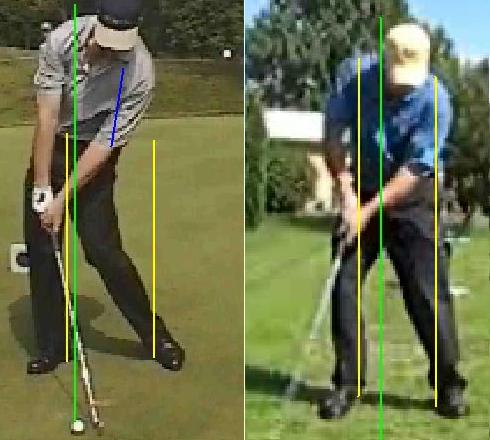
Hip High Through
Dan’s hip high through position re-affirms what we saw leading to (and at) impact. The upper body expended its power early in the downswing, and the arms were left to be the power providers at impact. Dan’s through swing position shows a lack of centripetal force to propel him through the shot and into the finish. The slowing (and/or stopping) of his body has now caused a slowing of his arms.
Elkington’s arms and body are swinging through together in the same unified manner that we saw during his backswing and downswing. That allows both the arms and the body to be used to generate power.
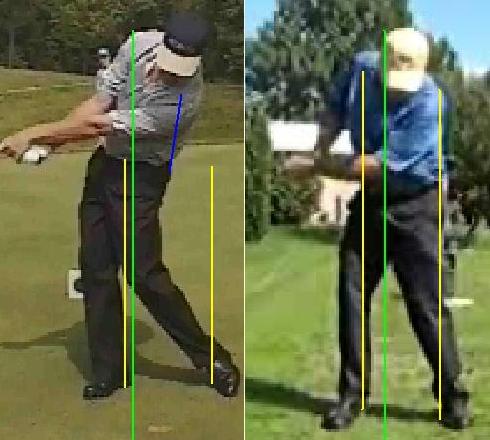
Summary
In conclusion two changes that should be a big help to improving Dan’s swing are to work on:
- rotational body motion (instead of shifting the body side to side)
- keeping the arms and chest moving in sync swing back and through
Those two changes will lead to a more efficent swing that generates more power with less effort.
If you’re interested in having your swing analyzed in a future edition of Swing Check here on The Sand Trap, check out the requirements page and submit your videos today!
Re Dan’s over the top move – I have tried the swing thought of holding my wrist angle to create lag with little success…what works for me when practicing my gravity drop is to concentrate on my left (leading) forearm. My swing thought is to keep it from rotating counterclockwise (clockwise for a lefty) until I get to waist height…this keeps the shaft and club head in line with my hands….works for me…just a idea.